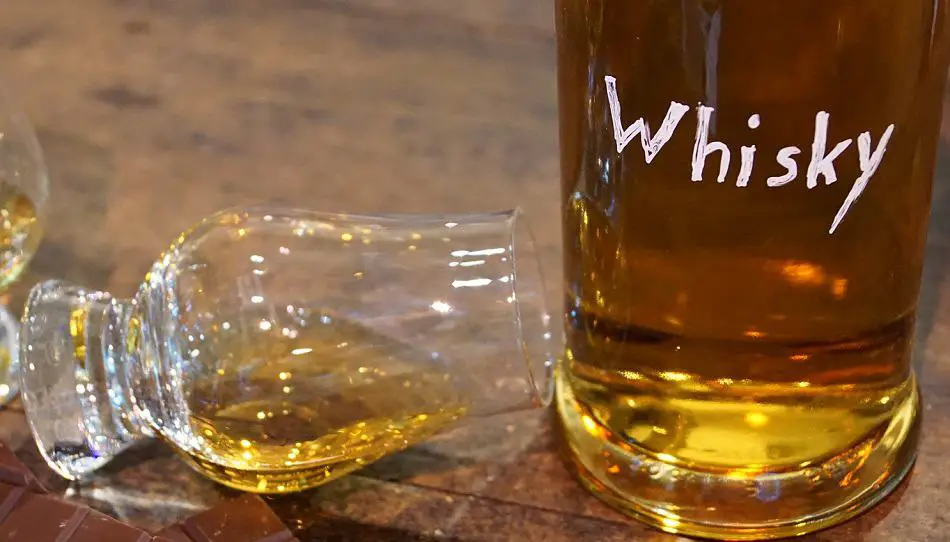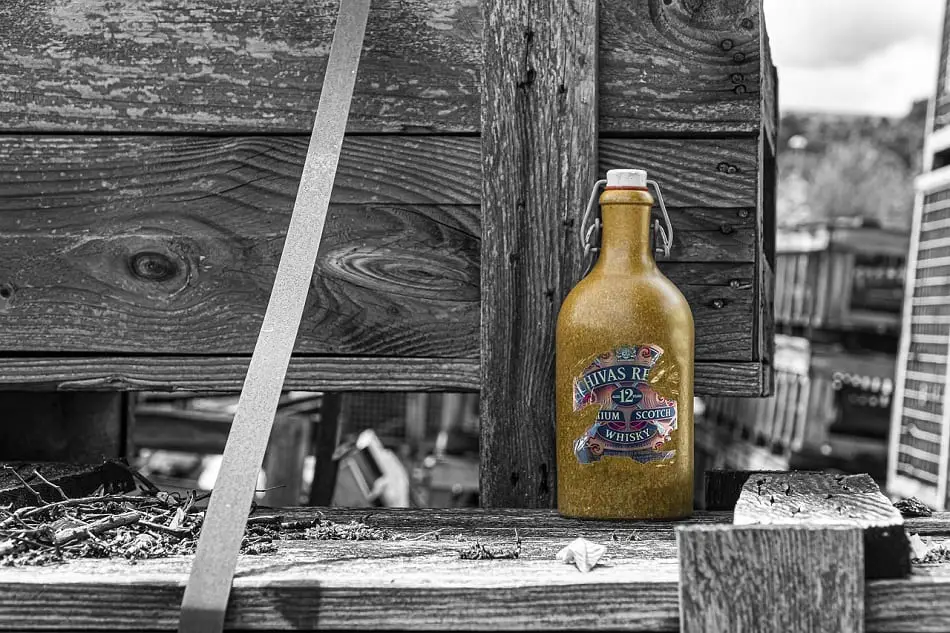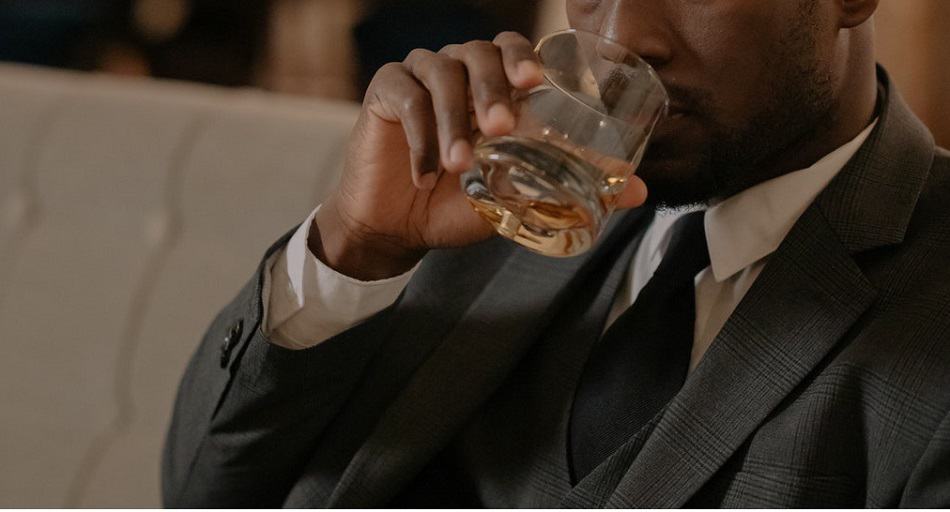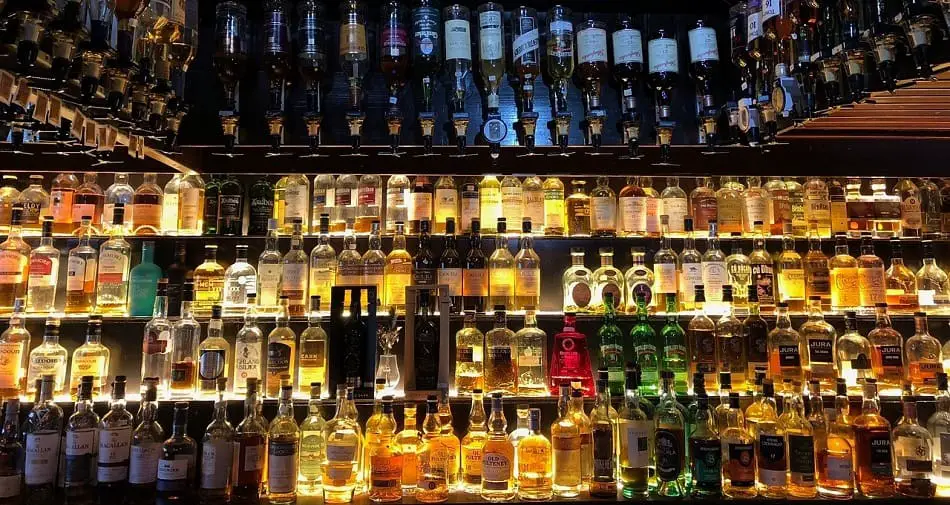Now obviously not everyone’s going to like whiskey. Such poor and tragic people do exist. But one has to wonder how many people who ask, ‘why does whiskey taste so bad?’ are basing their question on a strange and usual experience that often makes up the one and only time they interacted with whiskey. This is not a good way to make any reasonable decision. If it were many of us would still be single.
There are five reasons why a person may find whiskey tastes bad:
- They’re tasting the alcohol not the flavors.
- They don’t know how to drink whiskey.
- They’re drinking low quality whiskey.
- They don’t like certain flavors.
- Their whiskey’s gone bad.
If one or more of these are the reasons why you find a whiskey tastes so bad, then you’re going to want to know what to do in order to remove the factors that may be stopping you from enjoying whiskey.
If you try everything but still find that whiskey tastes bad, you may well be someone who just doesn’t like whiskey. But don’t worry, there are plenty of other alcoholic beverages, so you’re bound to find something you’ll like. Though, if you don’t mind a suggestion, start by trying scotch or bourbon.

Why Does Whiskey Taste So Bad? The Five Reasons
1. You’re Tasting the Alcohol Not the Flavors
Whiskey has an alcohol content of at least 40%. As a comparison, the average ABV for wine is 11.6% and for beer is 4.5% , so whiskey is very strong.
, so whiskey is very strong.
The alcohol, especially if you’re not used to it can get in the way of the flavors. It will be the first thing you smell and the first thing you taste and that is not pleasant. It will then numb your smell and taste receptors making it impossible for you to smell and taste the actual flavors of the whiskey.
If that is what happened to you then it’s not the whiskey that tastes so bad, it’s the alcohol.
2. You Don’t Know How to Drink Whiskey
Who knew there was more to drinking than simply taking liquid into your mouth and swallowing it? But apparently, with a complex drink like whiskey, there is.
Some of that is to do with ensuring the alcohol doesn’t get in the way of the flavors, but if you don’t know how to open a whiskey’s flavors and detect them in the first place, then it will be of no surprise that you find whiskey tastes so bad.
3. You’re Drinking Low Quality Whiskey
This is especially true if you’re like everyone else who first tried whiskey when they were relatively young and didn’t have that much extra money to spend on a high quality single malt scotch – yes, when you thought, ‘doesn’t he know scotch and bourbon are also whiskeys’, you missed a hilariously funny joke.
Cheap whiskeys are rushed through the production process with the goal of getting a relatively inexpensive product to market quickly. They’re not made for their great flavor. They’re made for people who can’t afford better and for those who have already ruined their taste buds on bad whiskey.
The problem with low quality whiskeys, cheap or otherwise, is that they lack flavor. Or to be more precise that they lack a pleasant flavor. If all you know is low quality whiskey, then the answer to ‘why does whiskey taste so bad?’ will be, because the ones your drinking have an awful flavor.
4. You Don’t Like Certain Flavors
There are lots of whiskeys out there, each having different flavors and characteristics. Just like you’re bound to find flavors you like, you’re also bound to find flavors you don’t.
You may have been very unlucky and the one whiskey you tasted had a flavor that you really don’t like.
This is true even if the person cajoling you to try whiskey swears that you’ll love the ones they do. But people are weird and have bizarre tastes, (which is good because if they weren’t, again, many of us would still be single) and don’t realize that not everyone loves the flavor of wet dog. Oh yeah, that’s a thing.
Even if you’ve tried a few whiskeys and don’t like any of them, if they’re all of the same type, for example they’re all from the same grain that has a taste you don’t like, or from the same whiskey region with a characteristic you don’t like, then your whiskey experience is still quite limited.
If you’ve don’t like a peaty, smoky flavor and you’ve only been drinking Scotch whiskeys that are known for exactly that, even if you’ve tried 10 or 20 different ones you’ve probably only been drinking whiskeys with the flavor you don’t like.
5. Your Whiskey’s Gone Bad

It’s not very likely but it is possible that your whiskey’s gone bad. Poor storage can cause this. If your whiskey has been exposed to direct light or worse direct sunlight, there may have been a chemical reaction in the volatile compounds of the whiskey causing them to break down and the flavors to degrade. It will taste much harsher, possibly even of rubber, paint thinner or rotten fruit.
If oxygen has gotten to your whiskey through a loose seal, then oxidation could have occurred. That’s when oxygen binds to one chemical compound turning it into another. When oxygen gets into your whiskey it will change the compounds and the flavors. Precisely how the flavors of your whiskey will change can’t be predicted. It may be for the better, it may be for the worse. But if this happens and your whiskey tastes bad, you’ll know it’s the later.
Oxidation can happen with an unopened but poorly sealed bottle and is impossible to stop once you open a bottle of whiskey. It can take between six months and two years to oxidize but it’s best to finish a bottle of whiskey within a few months of opening it so that you can enjoy it at its peak.
The more whiskey you drink, the more headspace (the space between the cork and the whiskey) there is. With a greater air to whiskey ratio in the bottle oxidation will happen at a quicker rate. An inch or two of headspace won’t have much of an effect on the whiskey’s taste for at least a year, but if three quarters of the bottle is air, you’re going to notice a degradation in quality in quite a short period of time – about a month.
So if someone who’s not a whiskey drinker but who still has that one bottle of whiskey they save for their whiskey drinking friends that’s been a third full for the last 25 years, offers you a glass you may want to decline.
The fact it’s still a third full means that everybody else did.
What to Do About It
1. Stop the Alcohol Getting in the Way of the Whiskey’s Flavors
There are a few things you can do to stop the alcohol getting in the way of the whiskey’s flavors.
The first is to use a proper whiskey glass. This means some type of nosing glass which are tall-ish glasses with a wide bowl, long narrow neck, thin stem and broad pedestal, like a Glencairn Whisky Glass which you can find on Amazon here.
With a nosing glass, air can get to the whiskey allowing it to breathe. The ethanol will evaporate, and the bowl shape will concentrate the whiskeys aromas towards the narrow rim allowing them to accumulate. With less alcohol in the way, you’ll be able to pick up all the whiskey aromas and then, because flavor is smell as well as taste, all the whiskey flavors.
However, if you use another type of glass to drink whiskey the opposite happens. Less ethanol evaporates and more whiskey aromas dissipate. With the whiskey aromas gone, the flavors will be different, were you able to taste them though the alcohol.
The second thing you can do to stop the alcohol getting in the way of the whiskey’s flavors is to dilute it with water. With the alcohol content diluted, your nosing and tasting equipment will be kept operational, leaving you able to detect the whiskey’s aromas and flavors.
Alternatively, and thirdly, you can reduce the effect of the alcohol by adding ice cubes. This chills the whiskey, tempering its intensity and calming the burn of the alcohol, making it a bit more palatable.
It’s also great if you want a cool, refreshing drink.
Lastly, you can acclimatize yourself to the alcohol.
When you nose your whiskey, you should do so gently so that you don’t get singed by the alcohol and your nostrils can get used to its strength. Open your mouth slightly as you inhale to let the alcohol fumes escape. Nose your whiskey again. Now you’ll be able to smell some of the whiskey’s aromas.
Similarly, when you taste your whiskey, drink a little sip first so that your mouth can also get used to the alcohol. The first sip will taste overwhelmingly of alcohol but with the second sip you’ll get more of the whiskey’s flavors.
If that doesn’t work because you still find whiskey too alcoholic, then you may need a more intense alcohol acclimatization program. Don’t worry, it’s not as menacing or as posh as it sounds. There are two methods but the basic premise of both is the same, namely that the more you expose your senses to a particular stimulus, the less you’ll react to it.
The first method is to pour yourself a whiskey, dilute it until it only burns a little and then drink it. Do this for two weeks adding less and less water each day, until you’re drinking whiskey neat – that means without any mixer, additional flavor or dilution.
The second method is to drink whiskey every day until it stops burning.
The first way is more pleasant than the second but it’s a lot more work having to be precise in how much whiskey you pour, how much water you add and by how much you decrease it each day. You might need a notebook.
2. Learn How to Drink Whiskey Properly

There are three parts to this.
The first is to ensure that the alcohol is not getting in the way of the whiskey’s flavors, which we’ve already talked about.
The second is to nose your whiskey properly. This is because, as already mentioned, flavor is not just taste it’s also smell. Missing out on the smells means you won’t get the full flavor.
Nose every part of the glass because different aromas concentrate at different parts of the glass and try and define all the smells you can detect.
The third part to drinking whiskey properly is to chew your drink. This means holding it in your mouth and swirling it around. Make sure it spreads throughout your mouth and covers all the surfaces of your tongue – the middle, the sides, the tip and the back – because different parts of your tongue respond to different flavors.
Swallow and take a deep breath, exhaling deeply through your nose so that the aromatic molecules in your mouth go to the back of your throat and rise up into your sinuses. Do not take another sip yet. Wait a moment so that the taste can come back up.
You may then want to add water which as well as diluting your whiskey opens up new and more subtle flavors. Even one drop of water can make a difference to the taste of your whiskey, so you may want to add just one drop of water at a time, noting the difference in taste after each one.
For more details see here, where I discuss the five ways to drink whiskey, the last of which is with all the aromas and flavors.
3. Drink Decent Whiskey
This doesn’t automatically mean spending lots of money on expensive whiskeys, but it does mean spending enough money to avoid cheap whiskeys.
Also, since there are other reasons why you may not like a whiskey, an expensive one may still disappoint you. It’s better to start with somewhat cheaper but better-quality whiskeys as they’re good and will give you a rough idea of what it is you like. This will put you in a better position if you ever want to buy that very expensive bottle of whiskey.
4. Try as Many Different Whiskeys as Possible

There are a lot of whiskeys out there with a lot of different styles, characteristics and tastes. There are full-bodied whiskeys with several if not dozens of dominant flavors and light-bodied whiskeys with only one or two. There are whiskeys with delicate or more mild flavors and those whose flavors are bold, intense and rich.
There are sweet whiskeys, spicy whiskeys, fruity whiskeys, floral whiskeys and smoky whiskeys.
Some common flavors are honeysuckle, almond, grassy, leather, cream, ginger, toffee, toast, cinnamon, heather, dried fruit, apple, honey, nutmeg, vanilla, nuts, oil, seaweed … to mention … these ones.
If the whiskey is made from malted barley it will be sweet with lots of caramel, toffee and brown sugar notes. If it’s made from corn it will also be sweet with a syrupy taste, with white sugar, cotton candy, vanilla and maple syrup. If it’s made from rye it will be more spicy, with pepper and cinnamon flavors. If it’s made from wheat it will taste of wheat bread and honey.
You could decide on a flavor or flavors you like and find out which whiskeys have them. You may want to stay away from whiskeys with flavors you think you don’t like, but at some stage you should probably try them … just in case. Or you could simply work your way through as many whiskeys as possible and find those you like, and which was the culprit that almost turned you off whiskey forever.
Tipxy.com have a great selection of whiskeys, which will help you do exactly that. You can find them here (affiliate link).
(affiliate link).
5. Make Sure You Store Your Whiskey Properly
Keep your whiskey away from direct light and sunlight, extreme or fluctuating temperatures that let in oxygen and also oxygen.
That means keeping your whiskey in a cool, temperature-controlled room at 15°-20°c or 59°-68°F. Cellars, that are dark with only a minimum amount of sunlight and heat, and a room temperature of 15°-18°c are perfect for storing whiskey, though I’m not sure the majority of us have one and we’ll have to make do with a place whose conditions are as close to that of a cellar as possible. Cool, with no direct light and as few temperature fluctuations as possible.
If your bottles are sealed, you’ll need to store them upright or the cork will be in constant contact with the whiskey. This is bad because the high ABV of the whiskey will cause the cork to decay and disintegrate. The seal will loosen and oxygen will seep in. Of course, the other problem is that if corks are kept completely dry for long periods of time they may chip and crumble also causing the seal to loosen and oxygen to seep in.
So even though your whiskey must be stored standing up it must also be turned over every so often. Some rest their bottles horizontally for an hour or so once or twice a year, others turn their bottles upside down for a few seconds once a month. This way the alcohol won’t damage the cork and the cork won’t dry out.
Opened bottles must be sealed tight each time they’re closed to prevent oxygen getting in.
As the headspace increases due to your drinking of your whiskey the oxidation will happen faster, so you can either transfer the rest of your whiskey to a smaller container, decreasing the headspace and slowing the rate of oxidation or you can finish off the bottle before it goes bad. I’m sure you can guess which of the two is the more popular option.
Conclusion
So, why does whiskey taste so bad? Well it could be that you and whiskey simply don’t mix, but it could be you had a bad experience with the whiskeys you’ve drunk. If all you tasted was the alcohol and none of the flavor, or you drank cheap, low quality whiskeys with no flavor, or whiskeys with a flavor or characteristic you don’t like or a whiskey that’s gone bad, then it’s not surprising that you’re asking why whiskey tastes so bad.
You’ll need to try several decent quality whiskeys. You’ll need to use a proper nosing glass, dilute the alcohol and try and pick up some of the whiskey flavors. If you do all that you may well find yourself liking whiskey.
If you try all that but still find you don’t like the taste of whiskey, there will be only one thing left to do: send me your left-over bottles.
Thanks in advance.

